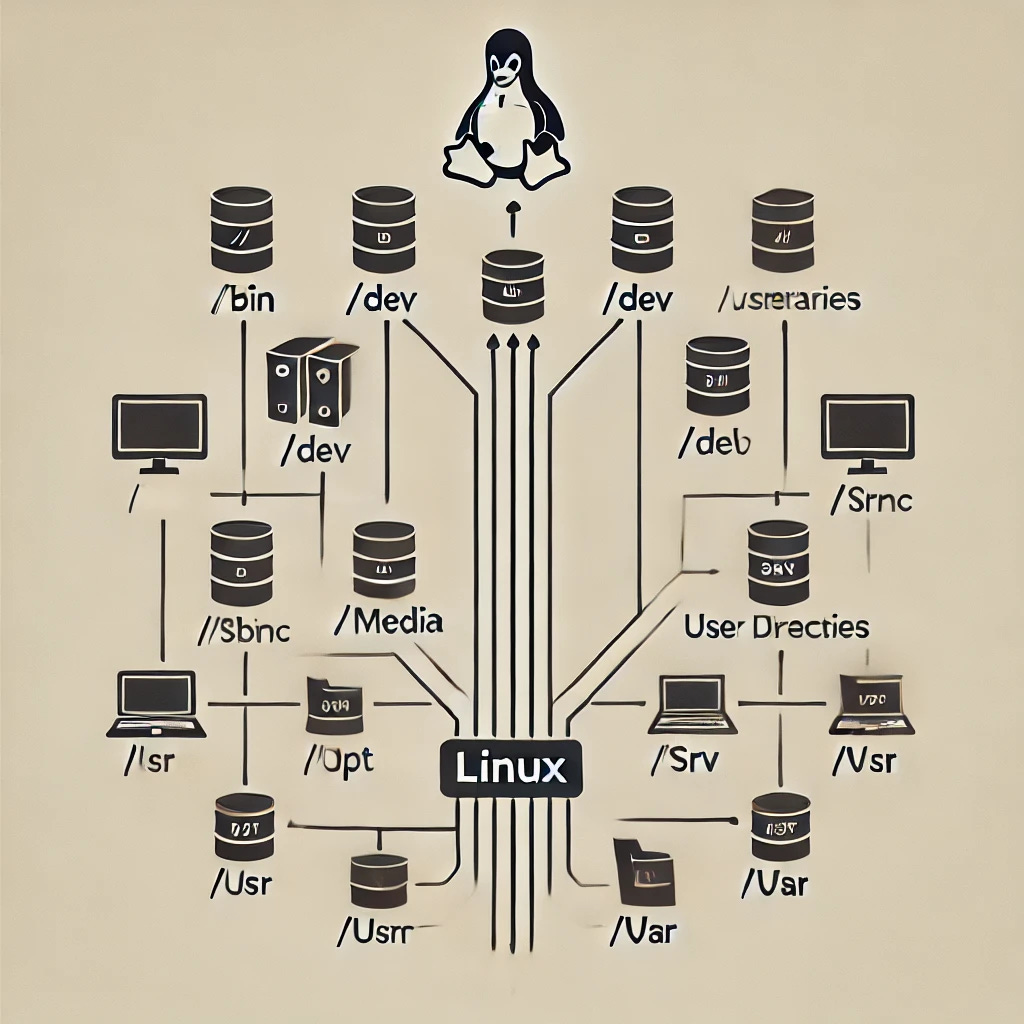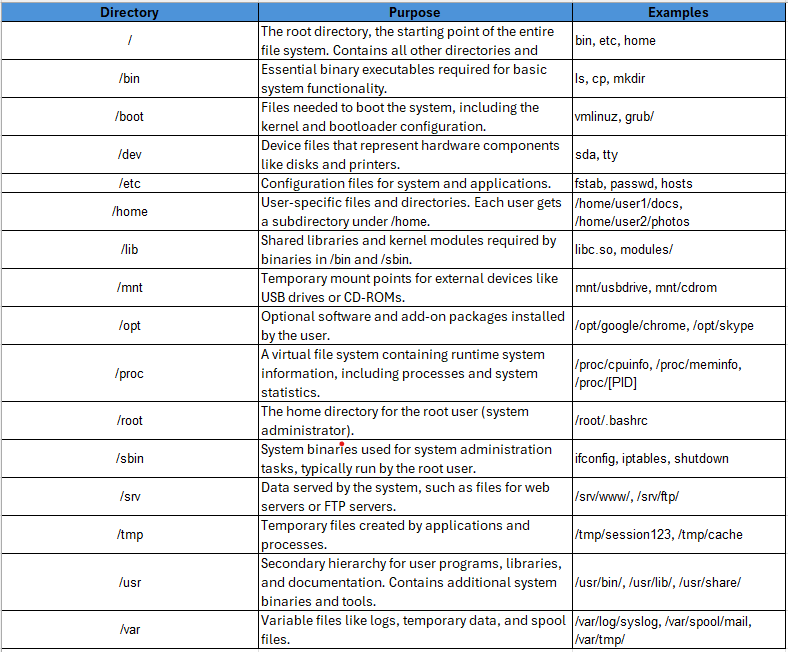Understanding Linux File Systems and Directory Structure - 2
How Linux File Systems Work
The Linux file system provides a logical structure, regardless of the underlying storage device. Directories are used to group related files, and paths (e.g., /home/user/docs) provide intuitive navigation. The kernel handles file operations through the Virtual File System (VFS), which abstracts the underlying file systems.
Understanding the Role of the Virtual File System (VFS) in Linux
The phrase "The kernel handles file operations through the Virtual File System (VFS), which abstracts the underlying file systems" describes how Linux provides a unified way to interact with files, no matter where or how they are stored. Let’s break it down step by step.
What is the Virtual File System (VFS)?
The Virtual File System (VFS) is a layer within the Linux kernel that acts as a bridge between user applications and the various file systems supported by the operating system. It allows applications to access files uniformly, regardless of the specific file system or storage medium being used.
Think of VFS as a translator:
To the user, every file and directory looks and behaves the same way.
Behind the scenes, the VFS translates these file operations into commands specific to the underlying file system (e.g., Ext4, XFS, NTFS).
Why is VFS Important?
Uniformity: Users and applications interact with files and directories in the same way, even if they’re stored on different file systems or devices.
Example: You can open, read, or write a file using the same commands, whether it’s on an Ext4 partition, an NTFS drive, or a remote file system like NFS.
Abstraction: By abstracting the details of individual file systems, the VFS makes it easier for the kernel to support multiple file systems without requiring applications to change their behavior.
Flexibility: Linux can seamlessly handle a mix of file systems across local disks, remote servers, and virtual devices because of VFS.
Linux Directory Hierarchy
The Linux directory structure starts from the root directory (/) and branches into subdirectories. Each has a specific purpose, ensuring consistency across distributions. Below are some of the directories in linux file system.
More details about file system can be found at File System Hierarchy Standard




